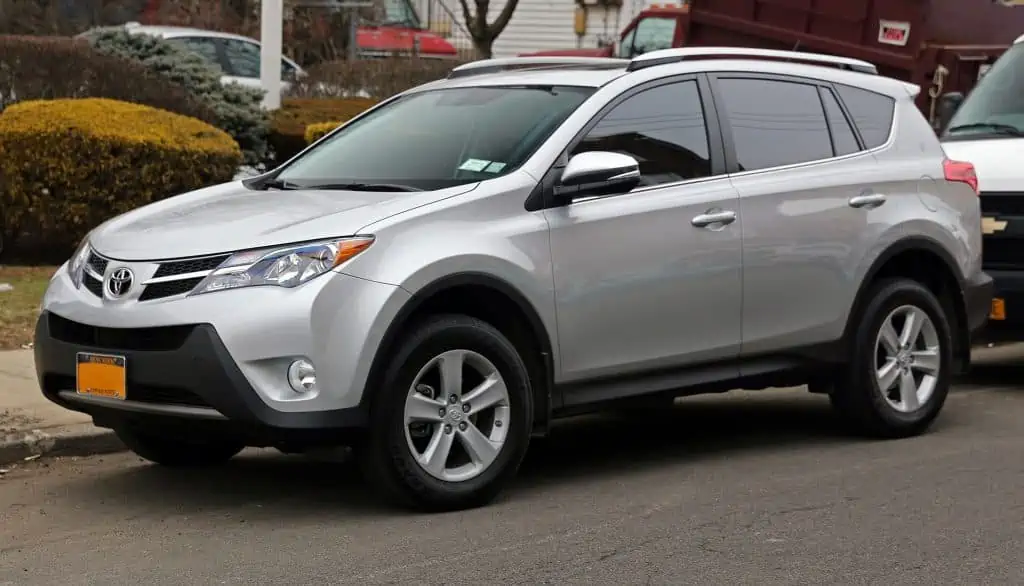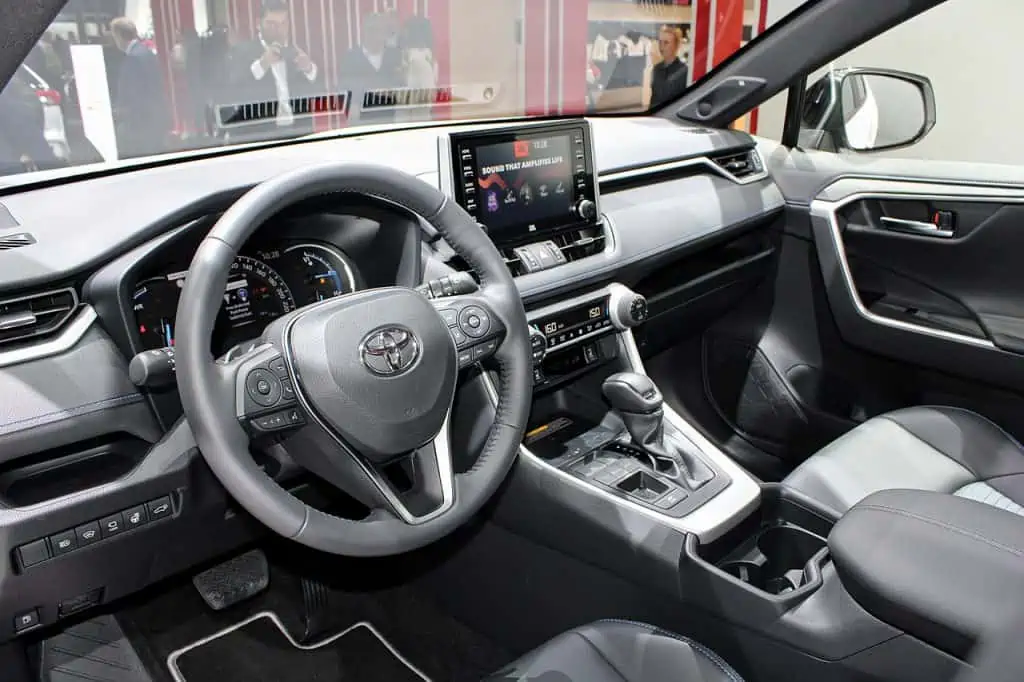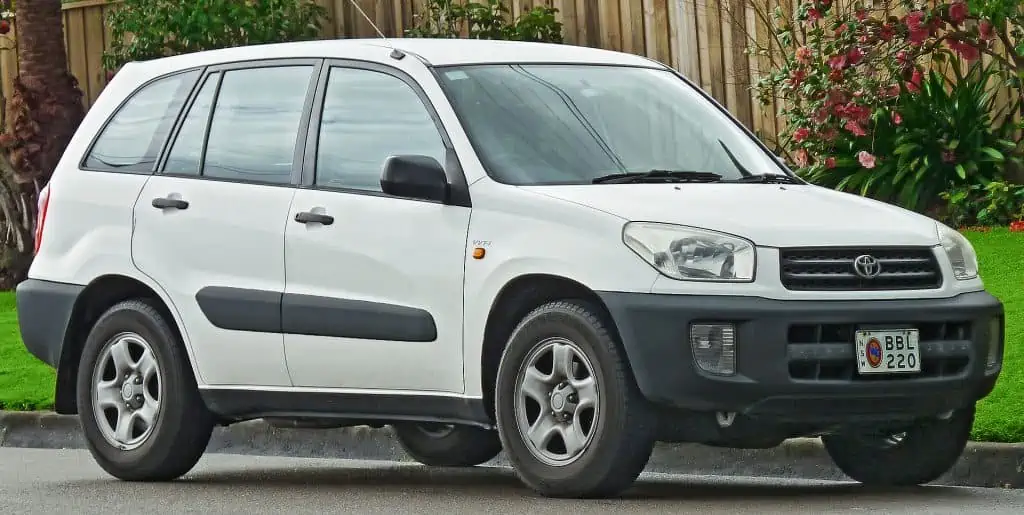The Japanese automaker Toyota produces the compact crossover SUV known as the RAV4. One of the first small SUVs to hit the market was this model, which debuted in 1995.
It was also one of the first automobiles to offer all-wheel drive as an option. Since its release, the RAV4 has seen numerous redesigns and facelifts due to its enormous popularity. The most recent iteration, which is offered in both gasoline and diesel versions, was introduced in 2019.
The RAV4 is an extremely adaptable car that can be used for many different things, including commuting, off-roading, and even light towing. It features a roomy cabin and offers room for five individuals to sit comfortably. The boot area is very roomy and can hold the luggage for a family’s vacation.
The model and trim level of the RAV4 determine the available engines. Diesel vehicles are powered by a 2.2-liter engine, while the petrol versions have either a 2.0-liter or 2.5-liter engine. Both eight-speed automatic and manual transmissions are available for all engines.
The RAV4 is a particularly alluring option for shoppers because of its abundance of features and equipment. Air conditioning, cruise control, Bluetooth connectivity, vehicle stability control, and alloy wheels are all included as standard equipment. Satellite navigation, leather upholstery, and heated front seats are features of higher trim levels.
Depending on the model and trim level, the RAV4 has a starting price of about $25,000. Its price makes it one of the priciest compact SUVs available, but because of its superb build quality, generous equipment, and adaptability, it is well worth the money.
If you know where to search, you can find a used Toyota RAV4 for a lot less money. The best option is always to purchase from a trustworthy dealer, but you can also get great prices on websites like eBay. Just make sure to investigate any purchases you plan to make.
The Toyota RAV4 should be on your shortlist if you’re searching for a versatile, useful, and reasonably priced SUV.
The Toyota RAV4 Years to Avoid and Why You Should Avoid Them
Since its introduction in 1995, the Toyota RAV4 has a long history and has been one of the most well-liked SUVs. As with any vehicle, there are some model years you should steer clear of more than others.
2019 Toyota RAV4 by Vauxford / CC BY-SA 4.0. The most recent Toyota RAV4 iteration, which is offered in both gasoline and diesel versions, was introduced in 2019.
The following are the models of the Toyota RAV4 years to avoid purchasing:
- The 2019 Toyota RAV4 (Fifth Generation)
- The 2013 Toyota RAV4 (Fourth Generation)
- The 2008 Toyota RAV4 (Third Generation)
- The 2003 Toyota RAV4 (Second Generation)
- The 1997 Toyota RAV4 (First Generation)
Toyota RAV4 Years to Avoid: The 2019 Toyota RAV4 (Fifth Generation)
The Toyota RAV4’s fifth generation made its debut in late 2018 for the 2019 model year. It has a drastically different design from its predecessor and is built on the Toyota New Global Architecture (TNGA) platform.
Automatic climate control, a seven-inch touchscreen infotainment system and a rearview camera are all included as standard features. Lane departure warnings, automatic high lights, and adaptive cruise control are safety features.
The fifth-generation RAV has experienced many problems since its release, despite its many upgrades. Let’s talk about these issues:
1. Transmission Issues
Transmission issues plagued the 2019 RAV’s fourth generation from the outset. The CVT (Continuously Variable Transmission), which is utilized on both gasoline and diesel versions, was largely to blame for these problems.
The transmission slipping and jerking, as well as rapid and unexpected acceleration, were among the complaints. When stopped at a red light or stop sign, some drivers complained that their automobiles would lurch forward.
2. Sputtering Sounds During Acceleration
A sputtering sound that can be heard when accelerating is another issue that frequently affects fifth-generation RAVs. This is more obvious when the car is cold and is typically brought on by an issue with the exhaust system.
A power loss or acceleration may occasionally also be present along with the sputtering sound. If it occurs while traveling on a highway, it could be extremely dangerous.
3. Problems with the Fuel System
There have been several instances of fifth-generation RAV fuel system issues. These problems can include the automobile stalling and running erratically or having trouble starting the engine.
When the gauge indicates that there is still fuel in the tank, some drivers have complained that their car would nonetheless run out of petrol. If it happens while you’re driving, it can be extremely frustrating and hazardous.
You should be aware of these potential issues if you’re thinking about purchasing a fifth-generation Toyota RAV. The best place to purchase a used car is from a trustworthy dealer who can provide you with a warranty or guarantee.
Toyota RAV4 Years to Avoid: The 2013 Toyota RAV4 (Fourth Generation)
The 2012 Los Angeles Auto Show saw the debut of the fourth-generation RAV4, which went on sale in early 2013. It is available with both front-wheel drive and all-wheel drive. The 2.5L four-cylinder engine in the RAV4 generates 176 horsepower and 172 lb-ft of torque.
The Toyota RAV4’s initial version was introduced in 1997. It was one of the earliest vehicles of its sort and a small SUV.
A six-speed automatic transmission is connected to it. The EPA estimates the RAV4’s fuel efficiency to be 24 mpg in the city and 31 mpg on the highway for the front-wheel drive model and 22 mpg in the city and 29 mpg on the highway for the all-wheel drive variant.
For a few reasons, it is on our list of years to stay away from. Let’s explore these:
1. Steering Issues
Steering issues are among the most prevalent issues with the fourth-generation RAV. When traveling on a straight route, some drivers have complained that their automobiles will occasionally veer to one side. Or the steering wheel was severely shaking.
In some situations, the steering wheel could feel slack or separate from the wheels. This carries a high risk of injury and multiple accidents.
2. Oxygen Sensor Issues
A malfunctioning oxygen sensor is another issue that frequently affects fourth-generation RAVs. One of the most crucial components of the engine management system is the oxygen sensor.
It keeps track of the oxygen level in the exhaust stream and modifies the fuel mixture as necessary. The check engine light may come on if the oxygen sensor is malfunctioning since it might make the engine run rich or low.
3. Bad Construction Quality
Poor construction quality is another problem with the fourth-generation RAV. The interior of the car, where numerous owners have complained that the plastic trim and upholstery are of extremely poor quality, is where this is most obvious.
There have been instances where the interior trim has completely fallen off or come free. Driving becomes exceedingly painful as a result of this.
It’s not uncommon for some external trim pieces to loosen up or disappear. This is most likely a result of their initial lack of strong attachment.
You should be aware of these potential issues if you’re thinking about purchasing a fourth-generation Toyota RAV.
Toyota RAV4 Years to Avoid: The 2008 Toyota RAV4 (Third Generation)
Toyota produced the third-generation RAV4 between 2006 and 2012. It could seat up to five passengers and be offered in two-wheel drive and four-wheel drive versions.
The car looked boxier and had slightly larger external measurements than the preceding model.
A 2.4-liter four-cylinder engine with 168 horsepower was housed under the hood. Both a five-speed automatic and six-speed manual transmission were offered.
Even while all of these features were excellent, the third-generation RAV had some serious issues. Let’s talk about these:
1. Braking Issues
Braking troubles are one of the Toyota RAV4 2008’s most prevalent faults. Numerous motorists have reported having brake issues, particularly with the pedal feeling “spongy” or “soft.” While driving, the brake pedal can even touch the ground.
This can be very risky and makes it far more difficult to stop the car in an emergency. Although a leak in the system is certainly a possibility, the air in the brake lines is the usual cause of this issue.
When they press the brakes, several drivers have experienced their automobile pulling to one side.
Between 2001 and 2005, the second generation RAV was manufactured. It was offered as a three-door hatchback or a five-door sedan with front-wheel drive or all-wheel drive.
2. Vehicle Burning Oil
Engine oil burning is one of the most frequent problems that 2008 Toyota RAV4 owners have. While there are several potential causes for this, worn-out piston rings are the most frequent ones.
When this occurs, it is simple for oil to leak past the rings and into the combustion chamber, where it will eventually be burned off. Excessive driving, using the incorrect type of oil, or just not changing the oil frequently enough are some more causes of engine oil burning.
Whatever the source, it’s critical to have the problem resolved right away to prevent more harm to your engine.
3. Problems with Automatic Transmission
Transmission troubles with the Toyota RAV 2008 are another frequent concern. Many drivers have complained that their car can occasionally slip out of gear or refuse to shift at all while they are driving.
The transmission might even start to leak fluid in some circumstances. These issues have the potential to be exceedingly risky and cause numerous accidents.
Although there are other potential causes as well, the transmission control module (TCM) is often to blame for these issues.
Toyota RAV4 Years to Avoid: The 2003 Toyota RAV4 (Second Generation)
Between 2001 and 2005, the second generation RAV was manufactured. It was offered as a three-door hatchback or a five-door sedan with front-wheel drive or all-wheel drive.
A larger three-liter VVTi V six engine with 163 horsepower or a smaller two-liter four-cylinder engine with 127 horsepower were both offered. A four-speed automatic transmission was an option on the V-6 versions, while a five-speed manual transmission was the norm.
The second-generation RAV had certain problems, despite being in many ways an improvement over the first. Which were:
1. Problems with Gear Shifting
There have been various reports of issues with the 2003 model year’s gear shifting. Sometimes, the car might not be able to go into reverse or drive.
Other times, it can be unable to change into another gear because it is stuck in one. As a result, the driver may not be able to manage the vehicle, which can be exceedingly dangerous.
This issue could have many causes.
One possibility is that the transmission itself is malfunctioning. Another possibility is that the shifter cable or linkage is malfunctioning.
2. The Engine Overheats
The Toyota RAV4 model from 2003 can be susceptible to engine overheating. A damaged radiator cap is one potential reason the RAV4’s engine overheats. The radiator cap is in charge of preventing the radiator’s coolant from boiling over. The coolant can boil over and overheat the engine if the radiator cap is malfunctioning.
A malfunctioning thermostat is another potential reason for engine overheating. The thermostat is in charge of controlling the engine coolant’s temperature. The engine coolant can get too hot and overheat if the thermostat isn’t functioning properly.
3. Defective MAF Sensor
The mass airflow (MAF) sensor on the Toyota RAV 2003 frequently malfunctions. The MAF sensor calculates how much air enters the engine.
On the Toyota RAV 2003, the mass airflow (MAF) sensor frequently fails. The amount of air entering the engine is calculated by the MAF sensor. If the MAF sensor is broken, the engine may run too rich or too lean. This could lead to many problems, such as exacerbated engine damage, increased emissions, and decreased fuel efficiency.
The engine may run too rich or too lean if the MAF sensor is malfunctioning. This may result in several issues, including worsened engine damage, higher emissions, and poorer fuel efficiency.
Toyota RAV4 Years to Avoid: The 1997 Toyota RAV4 (First Generation)
The Toyota RAV4’s initial version was introduced in 1997. It was one of the earliest vehicles of its sort and a small SUV.
The body-on-frame RAV4 was built to be capable both on and off-road. It had a 2.0L four-cylinder engine and could be had with front- or four-wheel drive. A diesel engine option was included in 1999.
It is hardly surprising that the RAV had some problems given that it was the first generation. Which were:
1. Poor Safety Scores
The first-generation RAV had several issues, chief among them being its subpar safety ratings.
The RAV received the Insurance Institute for Highway Safety’s (IIHS) lowest frontal collision protection rating in 1998. The RAV was one of the most hazardous vehicles on the road based on this ranking.
The RAV’s side impact protection received a “Poor” grade from the IIHS. This was due to the lack of supporting the seats provided in a collision and the minimal padding on the interior door panels.
One of the main reasons Toyota entirely rebuilt the RAV for its second generation was because of these subpar safety scores.
2. Error-Prone Catalytic Converter
A malfunctioning catalytic converter was another issue that the first-generation RAV frequently had. The catalytic converter is in charge of lowering the engine’s hazardous emissions.
The engine can generate significant amounts of carbon monoxide and other pollutants if it is malfunctioning. The catalytic converter may occasionally get so clogged that it causes the engine to stall.
3. Low-Inflation Air Bags
Under-inflated airbags were another safety concern for the original RAV.
The driver and passenger airbags in the front occasionally deployed with insufficient power.
In an accident, this might result in critical injuries or even death. Thankfully, newer models have this issue solved.
Is It Worth It to Buy a Toyota RAV4?
Before being renamed Robust Accurate Vehicle with 4-Wheel Drive, RAV4 stood for Recreational Activity Vehicle with 4-Wheel Drive. Nobody is certain why or for what the alteration was made, but it seems likely that it was merely a marketing ploy.
Since its premiere as a concept car in the 1989 automotive industry, the RAV4 has undergone significant changes. Through five generations, the considerably more ruggedly designed off-road vehicle has evolved into a useful four-wheel-drive small crossover with SUV capabilities and genuine everyday car amenities.
These are the Toyota RAV4 years to avoid. A well-kept Toyota of any kind will last you, as was already stated. An earlier generation can be something to buy if you’re searching for something that encourages a little more toughness and simplicity.
One of the most frequent problems with the Toyota RAV4 2008 is the brakes. Many drivers have complained about having braking problems, especially when the pedal seems “spongy” or “soft.” The brake pedal may even come in contact with the ground while driving.
You should stay with a late fourth- or fifth-generation Toyota RAV4 if you want a vehicle with all the latest technologies, including safety, infotainment, driver assistance, and more.
How Much Is the Toyota RAV4 Average Yearly Maintenance Cost?
If you buy a brand-new RAV4, general maintenance ought to be free for the first two years or 25,000 miles. The Toyota Car plan, which covers all regularly scheduled maintenance and includes fluid level checks and adjustments, tire rotation, engine oil and filter replacements, and multi-point inspections, is included with every new Toyota.
The average annual repair cost for a Toyota RAV4 is $441.00 after the first two years, according to RepairPal’s consumer reviews on Toyota RAV4 repair costs. Data from more than 1 million vehicles across the US is used to estimate annual repair expenses.
This indicates that you could expect to pay around $37 a month on average for Toyota RAV4 repairs. However, this number could be either greater or lower depending on how serious the repairs need to be. For instance, more money will be spent on significant repairs than on routine maintenance such as oil changes or tire rotations.
The good news is that Toyota RAV4s often have low repair costs and high levels of dependability. On RepairPal’s list of the most dependable cars on the road, Toyota RAV4s come closer to the first place. The Toyota RAV4 is a viable option if you’re seeking a trustworthy and reasonably priced vehicle.
Toyota RAV4 Years to Avoid: How Reliable Is the Toyota RAV4?
The RAV4 has received raving reliability reviews, which is to be expected given Toyota’s reputation for making dependable cars and SUVs. The Toyota RAV4 is rated as the third-best out of 26 compact SUVs by RepairPal, receiving a reliability rating of 4 out of 5 stars.
The RAV4 is one of the most dependable cars on the road thanks to great ownership costs, repairs that are less severe and less frequent than those on other compact SUVs, and overall cars.
The dependability ratings for the RAV4 are comparable to those of RepairPal on other reliability indices. The reliability rating for the RAV4 during the past ten years, according to Consumer Reports statistics, was an amazing 4.5 out of 5, and a 4.1 when we summed its ratings across the previous 20 years! Therefore, the RAV4 maintains the renowned Toyota dependability.
Compared to other compact SUVs, which have an average yearly repair cost of $521, this model’s is $429. The likelihood that you will visit a repair shop is also minimal and comparable to its peers.
Compared to all other vehicle types, owners of Toyota RAV4s bring their cars in for unplanned repairs an average of three times a year as opposed to four times a year. You’ll be relieved to learn that the likelihood of a repair being major—and hence not urgent—is around 10% for serious repairs. The average for SUVs in this class is 11%.
We advise purchasing supplementary coverage through a mechanical breakdown insurance provider (MBI) or a vehicle services contract because, even though repairing a Toyota RAV4 can be less expensive than other brands, you might still run into a sizable repair bill at some point (VSC).
These are frequently called extended car warranties. An MBI or VSC can provide you with peace of mind and lessen the blow of an unforeseen repair.
Which Ones are the Best Toyota RAV4 Model Years to Buy?
After discussing the Toyota RAV model years you should steer clear of, let’s look at some of its best years.

- The 2016 Toyota RAV4 (Fifth Generation)
- The 2017 Toyota RAV4 (Fifth Generation)
The 2016 Toyota RAV4 (Fifth Generation)
The 2016 (fifth generation) Toyota RAV4 is a tough out when it comes to selecting the best model. It has several qualities that drivers value, such as a roomy interior, a smooth ride, and great fuel efficiency.
Here are some specific reasons why the 2016 Toyota RAV4 is the best design yet:
1. Large Interior
The 2016 Toyota RAV4 has enough room for both passengers and goods. It boasts a wide cargo compartment that is ideal for transporting luggage, sporting goods, or shopping bags, as well as a roomy cabin with lots of head- and legroom.
2. A Smooth Ride
A smooth, comfortable ride is provided by the 2016 Toyota RAV4 thanks to its independent suspension and plush seats.
3. Outstanding Fuel Efficiency
One of the best aspects of driving a Toyota RAV4 is that you don’t have to give up power for fuel efficiency. One of the most fuel-efficient SUVs on the market, the 2016 model achieves outstanding mileage of 28 mpg in the city and 34 mpg on the interstate.
4. Stylish Appearance
Thanks to its streamlined, contemporary style, the 2016 Toyota RAV4 is among the most fashionable SUVs on the road. There are several colors to choose from, so you can select one that completely matches your style. Additionally, the RAV4 draws attention everywhere it travels thanks to its optional 19-inch alloy wheels and LED daytime running lights.
5. A Lot of Features
The 2016 Toyota RAV4 is equipped with all the features you require for a convenient, pleasant trip.
It has enhancements like a sunroof, a navigation system, and a premium JBL audio system in addition to basic features like automatic climate control and a six-speaker stereo. Whatever your requirements, the RAV4 can meet them.
The 2017 Toyota RAV4 (Fifth Generation)
The 2017 Toyota RAV4 is our choice for the greatest Toyota RAV4 model (fifth generation). Drivers will appreciate its new look, plush interior, and outstanding performance, among other characteristics. Additionally, it is a favorite pick for families due to its superior safety features.
Here are some specific reasons the 2017 Toyota RAV4 is the finest of the best.
1. The Design
The 2017 Toyota RAV4 features a brand-new appearance that is both attractive and contemporary. It has a sporty image because of its athletic stance and sharp exterior lines, and its roomy inside is both comfortable and useful.
2. The Comfort
Comfort is a priority in the design of the 2017 Toyota RAV4. Its roomy interior provides enough head- and legroom, and its sturdy and comfy seats. Additionally, the cabin’s climate control system keeps it warm in the winter and cool in the summer.

3. The Performance
A 2.5-liter four-cylinder engine with 176 horsepower and 172 lb-ft of torque powers the 2017 Toyota RAV4. It has a six-speed automatic transmission and front-wheel drive as standard. All-wheel drive is nevertheless a choice.
4. The Safety
The 2017 Toyota RAV4 includes many cutting-edge safety systems as standard equipment, including lane departure warning, adaptive cruise control, and automatic high lights. A terrific approach to keeping an eye on your surroundings is also provided by its optional blind spot monitor.
Toyota RAV4 Years to Avoid: What Is the Lifespan of a Toyota RAV4?
This is a challenging issue to answer because many factors might influence a vehicle’s longevity. The Toyota RAV4 appears to survive for approximately 200,000 miles before needing significant repairs or replacement parts, according to our research and user input.
This makes it one of the more dependable and durable SUVs available right now. The Toyota RAV4 should therefore be at the top of your list if you’re searching for a car that has a strong dependability rating and will last you for many years and miles.
2019 Toyota RAV4 Adventure by Kevauto / CC BY-SA 4.0. The fourth generation of the 2019 RAV started with transmission problems. These issues were primarily the fault of the CVT, which is used in both the gasoline and diesel models.
Toyota RAV4 Years to Avoid: The Conclusion
One thing is evident in this situation thus far. There are issues with the RAV4 that arise with every model year, going generation by generation, year by year, and model by model.
No vehicle, however, will guarantee a customer’s complete satisfaction. Every car sold nowadays has one or two mechanical problems. No model year will be faultless, and the RAV4 is no exception. Random issues will most likely continue to crop up.
The RAV4 has a lengthy history of being a dependable car, especially in the last five model years. Some model years are less likely than others to experience mechanical issues.
Therefore, it will be crucial to conduct in-depth research on your selected model of RAV4 before making a decision that best suits your demands.


Nyangano Maurice specializes in vehicle troubleshooting and has more than 10 years of experience in the automobile industry. Over many years of experience as a car mechanic, he has acquired a broad range of skills, including engine repair, brake systems, electrical systems, and more. He frequently hosts community workshops and training programs to help motor vehicle owners understand their vehicles better.






